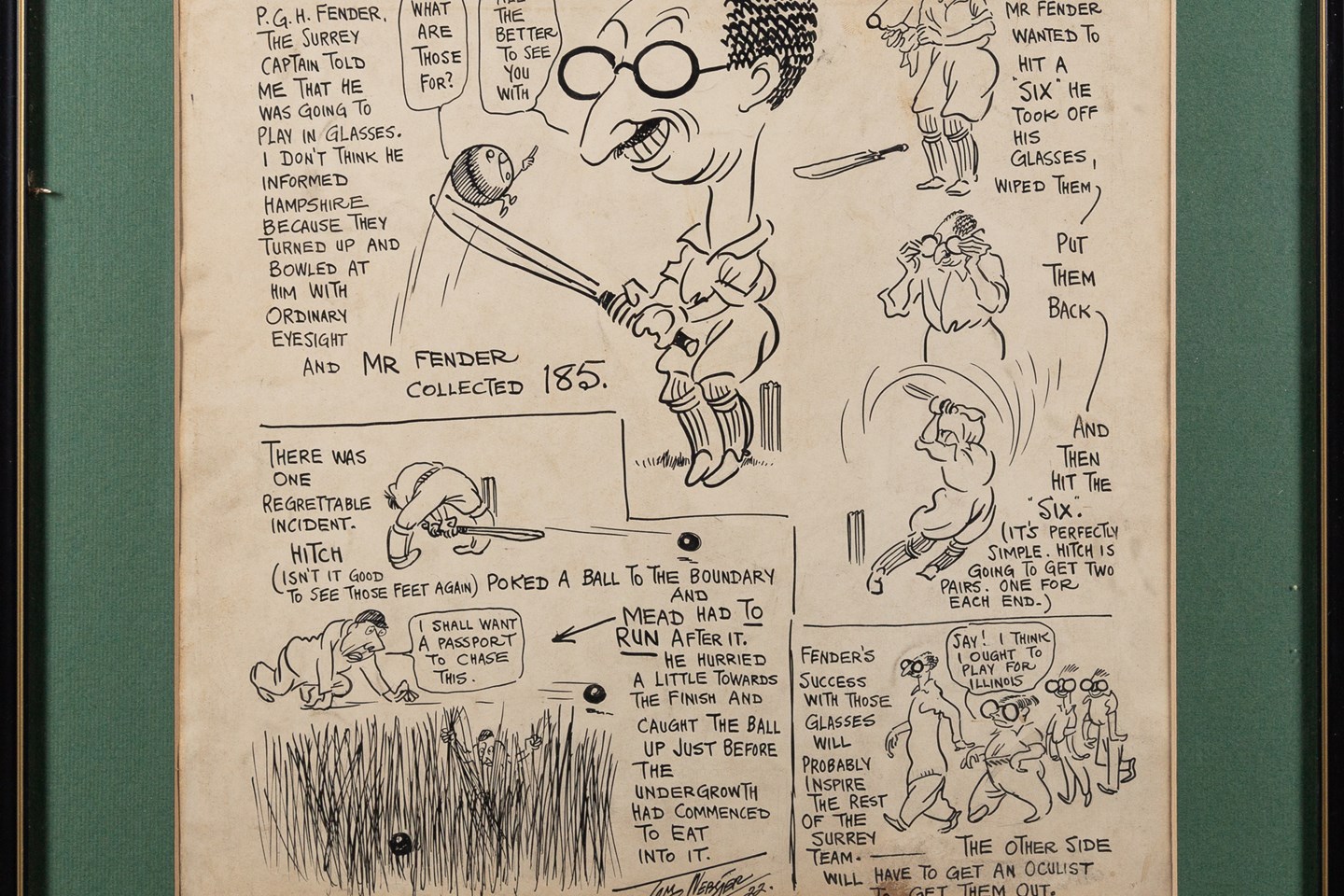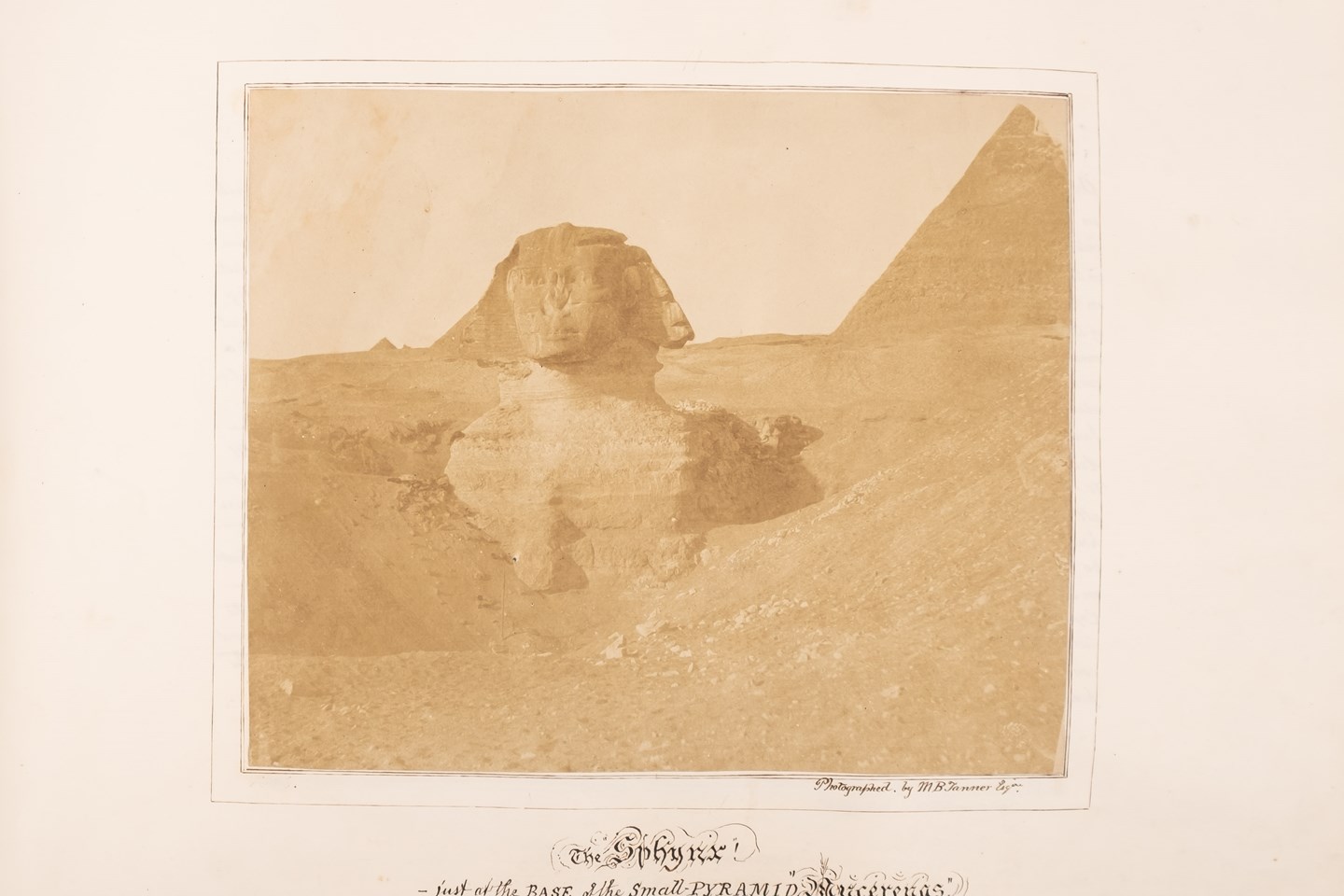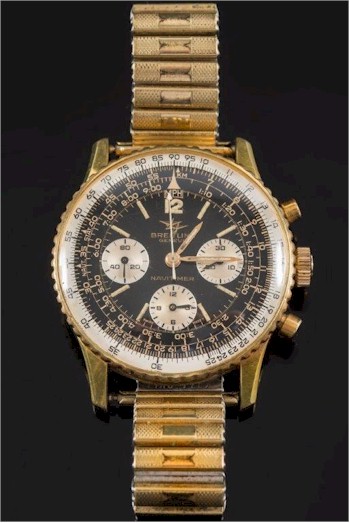
Breitling: A gentleman's gold plated 'Navitimer' wristwatch.
Wristwatches have been a visible indication of wealth and status for many years, even from the first arm watches worn by some members of the Court of Elizabeth I.
It was not until the 19th century and the need for greater precision by the military to co-ordinate operations across a wide area simultaneously that the watch we know today was developed.
Early versions were simply small pocket watches with lugs soldered on to them. Mappin & Webb produced a campaign watch that was used by officers in the Boer War of 1898 and the first wristwatch in the form we know today was developed in the early 20th century by Louis-Francois Cartier and Dimier Frere & Cie.
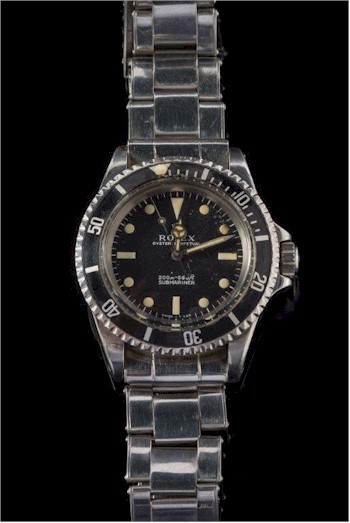
Rolex: A gentleman's Rolex Oyster Perpetual 200m = 660ft Submariner' wristwatch.
In 1905, Hans Wilsdorf and his brother-in-law Alfred Davis established a firm making wristwatches that was later to become perhaps the best known watchmaker, Rolex.
As with many things in life, women had realised the practicality of using wristwatches since the late Victorian period. It was not until the end of the First World War that men began to use them in greater numbers. The Horological Journal of 1917 noted that the wristwatch:-
...was little used by the sterner sex before the war, but now is seen on the wrist of nearly every man...
Many of these early watchmakers still remain the most desirable makers today and over the years each has produced a particular model that has remained fashionable and popular with collectors at auction.
The Cartier Tank Watch, inspired by the shape of the tanks of WWI, still remains a popular model today and varies in value from £700 to £18,000 depending upon the age and materials used, such as platinum and diamonds.
Classic styling and clever marketing has kept the demand for men's watches particularly high at auction. Small lady's cocktail watches are still sought after for the value of the jewels incorporated into some, but the market is led by men's wristwatches.
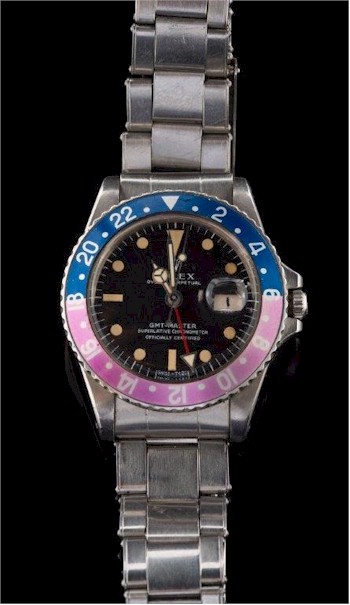
Rolex: A gentleman's stainless steel 'Rolex Oyster Perpetual GMT Master Superlative Chronometer Officially Certified' wristwatch.
The Rolex GMT was launched in 1954 in collaboration with Pan American Airways for their pilots and navigators, a popular design that still fetches £3,000 plus at auction.
The Rolex Submariner introduced in 1954 is another model that also fetches a similar price due to the popularity of the 'Mercedes' hands.
Cars and watches seem to have had a long relationship since the likes of Jackie Stewart in the 1960s. Even today, most watch makers are associated with some form of motorsport.
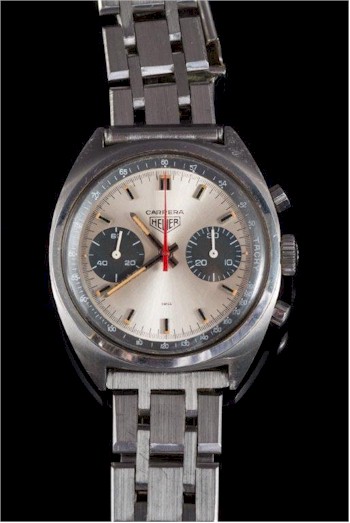
Carrera Heuer: A gentleman's stainless steel chronometer wristwatch.
The popularity of Heuer watches began with the brief appearance of a Heuer Monaco on the wrist of Steve McQueen in the film Le Mans, while Omega can thank a certain James Bond for the popularity of its range of Seamaster and Speedmaster watches.
While the idea of having a watch that can make phone calls, surf the Internet and tell you your physiological disposition based upon what you have just eaten is appealing to some, the lure of classic wristwatches seems to be as strong as ever. Tempting as new technology may be, I for one will stick to my old reliable watch, so long as I remember to wind it.
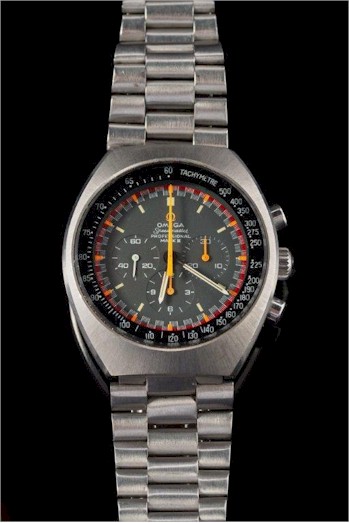
Omega: A gentleman's 'Omega Speedmaster Professional Mark II' stainless steel wristwatch.
- Bearnes Hampton & Littlewood
- Fine Art Auctions
- Wristwatches
- Mappin & Webb
- Louis-Francois Cartier
- Dimier Frere & Cie
- Alfred Davis
- Rolex
- Omega
- Heuer
Wristwatches was written on Tuesday, 29th September 2015.







